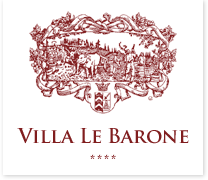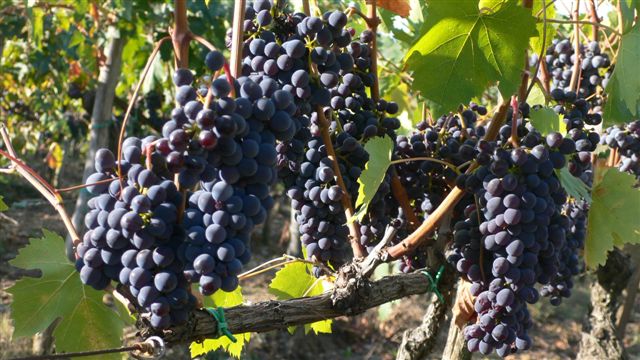Villa le Barone is a country hotel located in the heart of the Chianti Classico region, where wine has been produced for centuries.
Chianti, a part of Tuscany, is a land of ancient traditions, inhabited in remote periods first by the Etruscans, who left many traces of their activity in the wine sector and then by the Romans. In the Middle Ages, the cities of Florence and Siena battled for control over the land. Villages and monasteries, castles and fortresses appeared during that period and many of them, such as Villa le Barone, which was a Florentine defense tower close to the boundary with Siena, were later transformed into villas and country residences when times were more tranquil. It was at that time that large extensions of land were cleared in the vast forests of chestnuts and oaks for the cultivation of vineyards and olive trees, an activity that progressively increased in economic importance and established for itself an international reputation.
The first notarial document in which the name Chianti appeared in reference to the wine produced in that region goes back to 1398 and in the 17th century exports to England became increasingly frequent. With the agrarian revival in Tuscany in the early 18th century, the sharecropper system came to dominate Chianti and the landscape became more beautiful being “manicured” by this intensive work. Many of the farmhouses, as well as the physical layout of the properties, which has survived, date to that period. Marchesa Viviani Della Robbia, in her book “A farm in Chianti” gives, with Villa le Barone, a good example of how a farm operated at that time.
Not all the wine produced in the Chianti region is Chianti Classico: having the right to the denomination is not sufficient. The rules define a given territory on which the wine has to come from, but they also state the conditions and the requisites that permit a wine to be labelled with the name Chianti Classico DOCG: A minimum ratio of 80% of Sangiovese grape, the typical local red variety, is necessary. Along with the Sangiovese, other red grapes of the area can be used up to a maximum percentage of 20%. These grapes include native species like Canaiolo and Colorino as well as “international” varieties like Cabernet Sauvignon and Merlot.
The Chianti Classico region extends over 70,000 hectares (172,900 acres) spread over 2 provinces, Firenze and Siena.It includes the entire territories of the counties of Castellina in Chianti, Gaiole in Chianti, Greve in Chianti and Radda in Chianti and parts of those of Barberino Val d’Elsa, Castelnuovo Berardenga, Poggibonsi, San Casciano Val di Pesa and Tavarnelle Val di Pesa,. Forests occupy almost two-thirds of the zone. Oaks grow just about everywhere, while chestnuts thrive primarily on the eastern side of the district. Conifers grow at higher altitudes, while stands of pines are common on the low hills to the south of Florence. Numerous wild animals can be seen such as pheasants, wild boar, hares and roebucks.
One will find at Villa le Barone, an hotel located in Greve in Chianti, in the heart of the Chianti Classico territory, the best Chianti Classico wines, such as the Fontodi, Riseccoli, Cavalli, Le Fonti, Molino di Grace Chianti Classico … and many others! And from the pool, the gardens, the tennis, there are wonderful views on the Chianti Classico vineyards.

